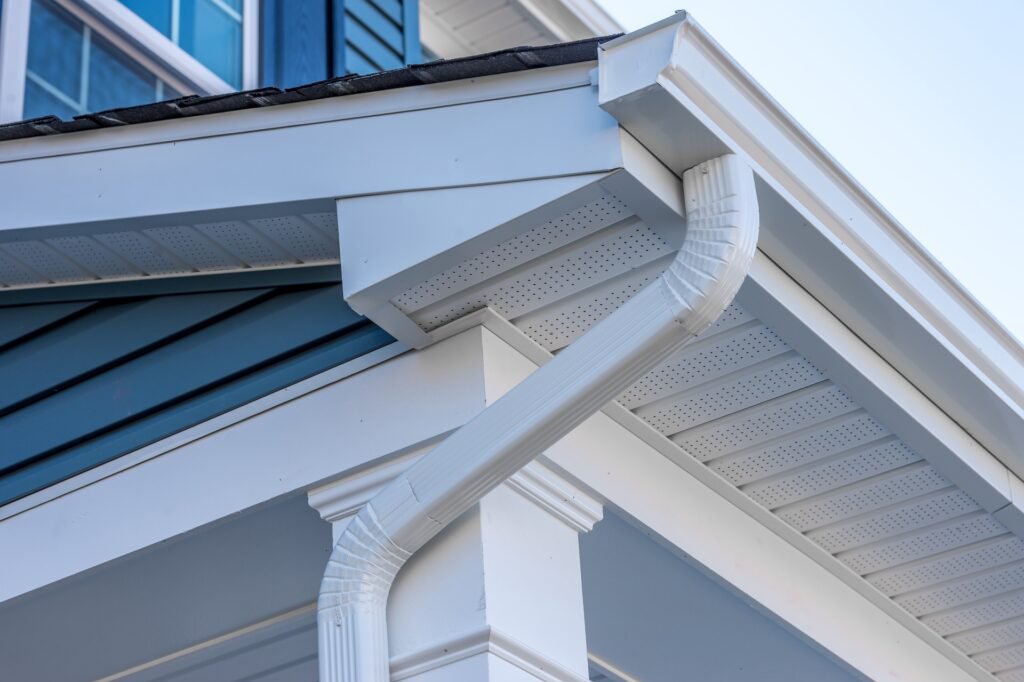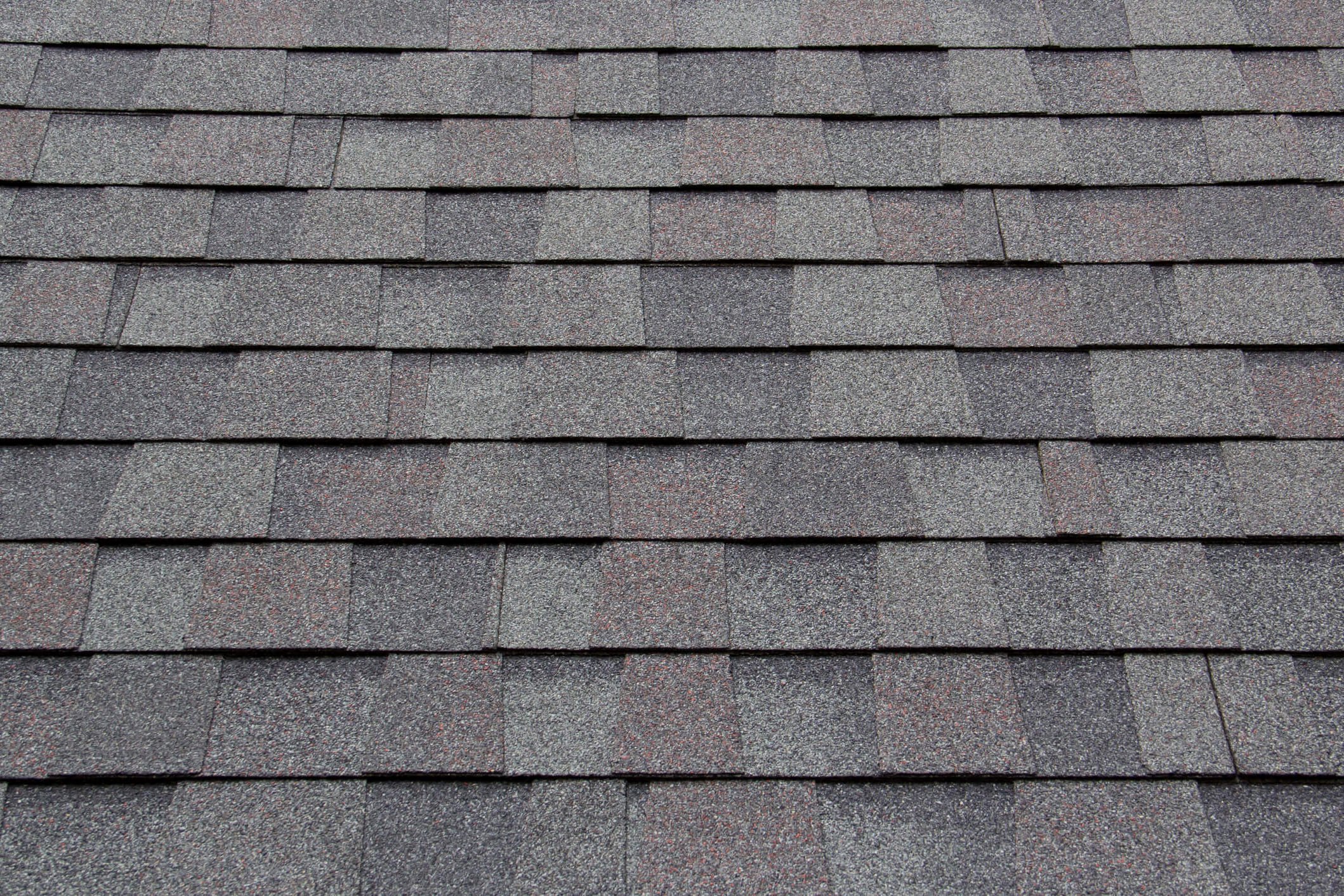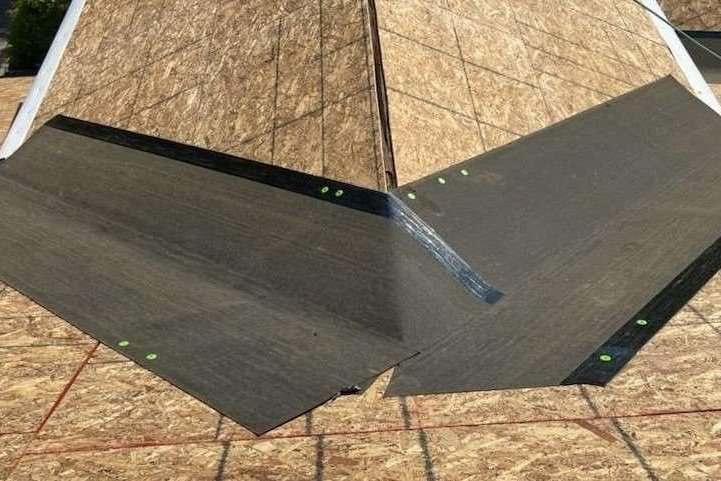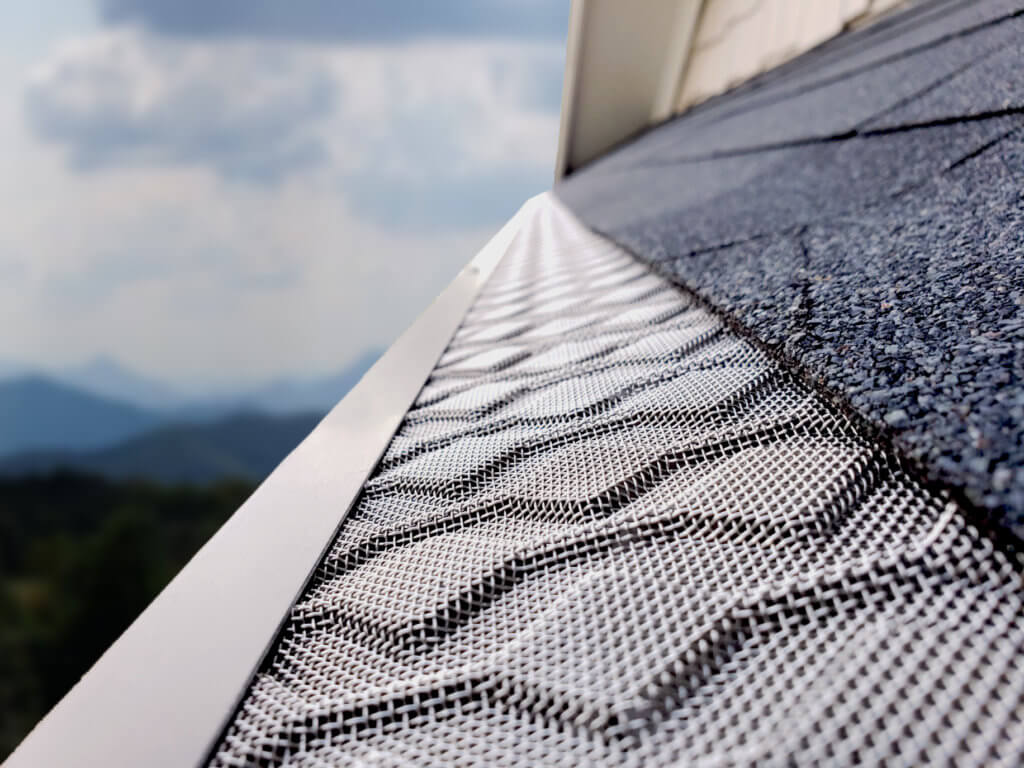Who to Call for Skylight Installation in Portland, Oregon - Hire a Roofer
Adding a skylight can dramatically transform a room, flooding it with natural light and making it feel more spacious and inviting. Whether you're looking to brighten a dark hallway, add ventilation to a bathroom, or enhance the ambiance of a living area, skylights offer numerous benefits. However, integrating a window into your roof structure is a complex process that requires specialized knowledge and skill. For homeowners in Portland, Oregon, understanding who is best equipped to handle this delicate task is crucial to ensure a successful, watertight, and long-lasting installation. While other contractors might seem capable, the professional best suited for skylight installation is almost always a licensed roofer.
Why Professional Skylight Installation is Crucial
Installing a skylight isn't simply cutting a hole in your roof and dropping in a window. It involves intricate steps that directly impact the integrity and weather resistance of your home's primary defense against the elements. Improper installation can lead to significant problems down the line, most notably leaks. A leak around a skylight can cause extensive damage to the roof deck, framing, insulation, drywall, and interior finishes, potentially leading to costly repairs far exceeding the initial installation cost.
Structural integrity is another critical consideration. The roof structure must be properly modified to support the weight of the skylight and redistribute loads. This often involves cutting rafters or trusses and installing headers and additional framing. Incorrect structural modifications can compromise the stability of your roof.
Furthermore, manufacturers' warranties on skylights and roofing materials often depend on professional installation according to specific guidelines. A DIY job or installation by an unqualified individual could void these warranties, leaving you unprotected if issues arise.
Choosing a professional ensures that the work is done correctly the first time, using appropriate techniques and materials to create a durable, watertight seal that will protect your home for years.
Who Installs Skylights? The Primary Role of Roofers
While a general contractor might oversee a larger renovation project that includes a skylight, the actual installation work that interfaces directly with the roof system should ideally be performed by a qualified roofer. Here's why roofers are the experts for skylight installation:
- Roof System Expertise: Roofers understand the entire roof system – from the deck and underlayment to the shingles, flashing, and ventilation. They know how these components work together and how to integrate a foreign element like a skylight without disrupting the system's function.
- Weatherproofing Mastery: Roofers specialize in keeping water out. They are experts in flashing, the critical material and technique used to create a watertight seal around roof penetrations like chimneys, vents, and, most importantly, skylights. Different roofing materials (asphalt shingles, metal, tile) require specific flashing methods, and roofers possess this nuanced knowledge.
- Structural Knowledge (Roof Specific): While not structural engineers, experienced roofers understand how to safely cut into and frame a roof opening while maintaining structural integrity. They know how to install headers and supports correctly to transfer loads around the new opening.
- Material Compatibility: Roofers are familiar with various roofing materials and how they interact with skylight components and flashing. They ensure that all materials used are compatible and installed in a way that prevents water intrusion and premature wear.
- Safety: Working on a roof is inherently dangerous. Roofers are trained in safety protocols, use proper equipment, and understand how to navigate roof pitches and heights safely.
General contractors may manage projects and coordinate subcontractors, but they often delegate specialized tasks like roofing and skylight installation to experts. A handyman might be capable of interior finishing work, but they typically lack the in-depth knowledge of roofing systems required for a reliable, leak-free skylight installation from the outside.
For any project involving penetrating your roof, especially for a skylight, entrusting the work to a licensed roofer is the most reliable way to protect your home's structure and prevent costly leaks.
What to Look for in a Roofer for Skylight Installation
When seeking a roofer to install a skylight on your home in Portland, Oregon, consider the following qualifications to ensure you hire a competent professional:
- Licensing and Insurance: Verify that the roofer is properly licensed by the state and carries both liability insurance and workers' compensation insurance. This protects you from financial responsibility in case of accidents or damage during the project.
- Experience with Skylights: Ask specifically about their experience installing skylights. A roofer who regularly performs skylight installations will be more familiar with the nuances and potential challenges compared to one who primarily handles full roof replacements. Request photos of past skylight projects.
- Reputation and References: Check online reviews and ask for references from previous customers who had skylights installed. Speak to references about their experience, the quality of the work, and whether any issues arose after installation.
- Warranties: Inquire about the warranties offered, both on the workmanship and the materials (skylight unit and flashing). A reputable roofer will stand behind their work.
- Local Knowledge: A roofer familiar with the Portland area understands the local climate, building codes, and common roofing practices, which can be beneficial for a proper installation that withstands local weather conditions.
Choosing a roofer with a proven track record in skylight installation provides peace of mind, knowing your project is in capable hands.
The Skylight Installation Process Explained
Understanding the basic steps involved in a professional skylight installation helps homeowners appreciate the complexity and the roofer's role:
- Initial Assessment: The roofer inspects the proposed location from both inside and outside the house. They assess the roof structure (rafters/trusses), pitch, existing roofing material, and potential obstructions (wiring, plumbing, HVAC). They confirm the best size and type of skylight for the location and structural constraints.
- Interior Preparation: The area below the planned opening is prepared. This might involve protecting furniture and flooring or building a temporary barrier to contain dust and debris.
- Cutting the Opening: From the interior, the roofer carefully marks and cuts the opening in the ceiling and drywall. From the roof, they remove the roofing material (shingles, tiles, etc.) and cut the opening in the roof deck according to the skylight manufacturer's specifications.
- Framing the Opening: The roofer builds a sturdy frame within the roof structure to support the skylight. This often involves cutting rafters or trusses and installing headers to transfer the load. Accurate framing is essential for the skylight unit to fit correctly and for structural integrity.
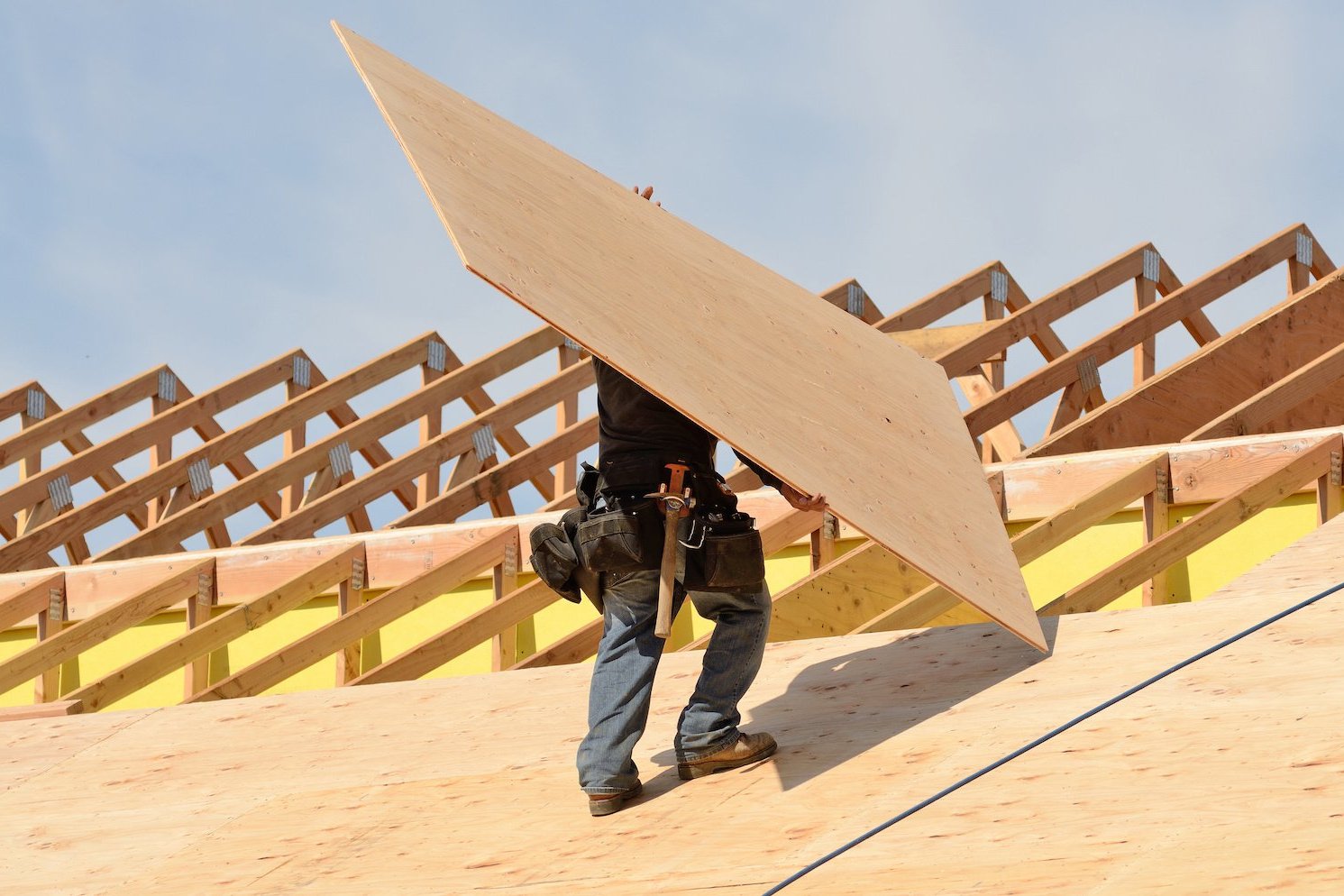
Proper framing and structural work are critical steps in the installation process. - Installing Underlayment and Ice & Water Shield: Before the skylight unit is installed, the roofer prepares the roof deck around the opening. This involves installing specialized underlayment and ice and water shield membranes. These materials create a vital secondary barrier against water penetration, especially around the vulnerable edges of the opening.
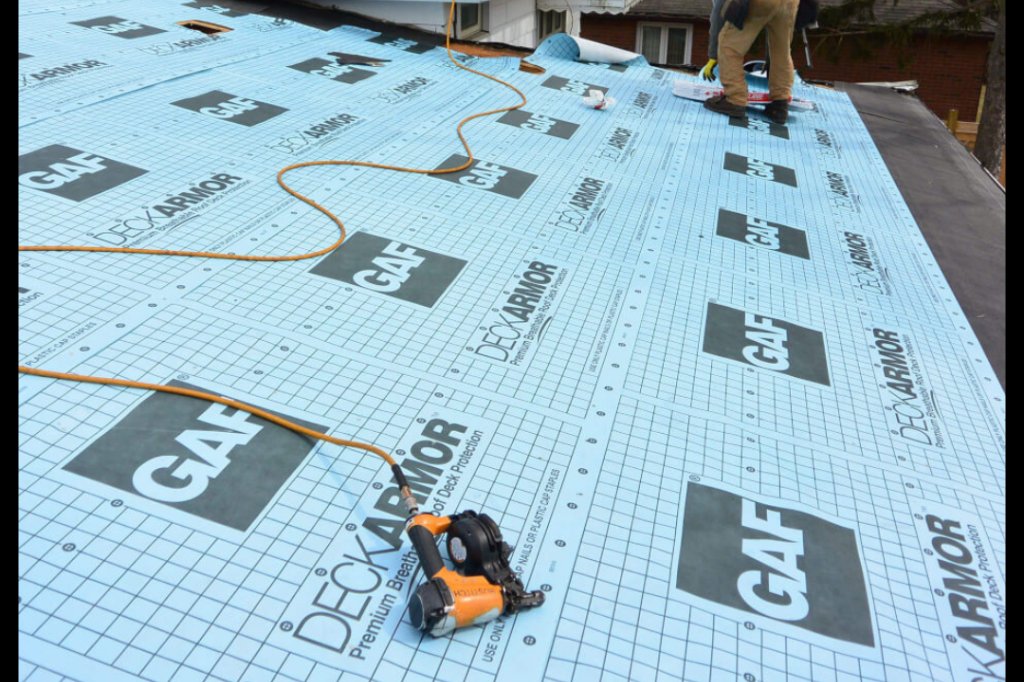
Applying ice and water shield is a crucial step for preventing leaks around roof penetrations. - Setting the Skylight Unit: The skylight unit (either curb-mounted or deck-mounted) is carefully placed into the framed opening and securely fastened according to the manufacturer's instructions.
- Installing Flashing: This is perhaps the most critical step for preventing leaks. The roofer installs layers of specialized flashing around the entire perimeter of the skylight. This flashing is integrated with the roofing material in a specific overlapping pattern that directs water away from the skylight and down the roof. Different types of flashing are used depending on the skylight type, roof pitch, and roofing material. Step flashing, apron flashing, and head flashing are commonly used components.
- Integrating with Roofing Material: The existing or new roofing material is carefully installed or reinstalled around the skylight, overlapping the flashing correctly to ensure a seamless, watertight transition.
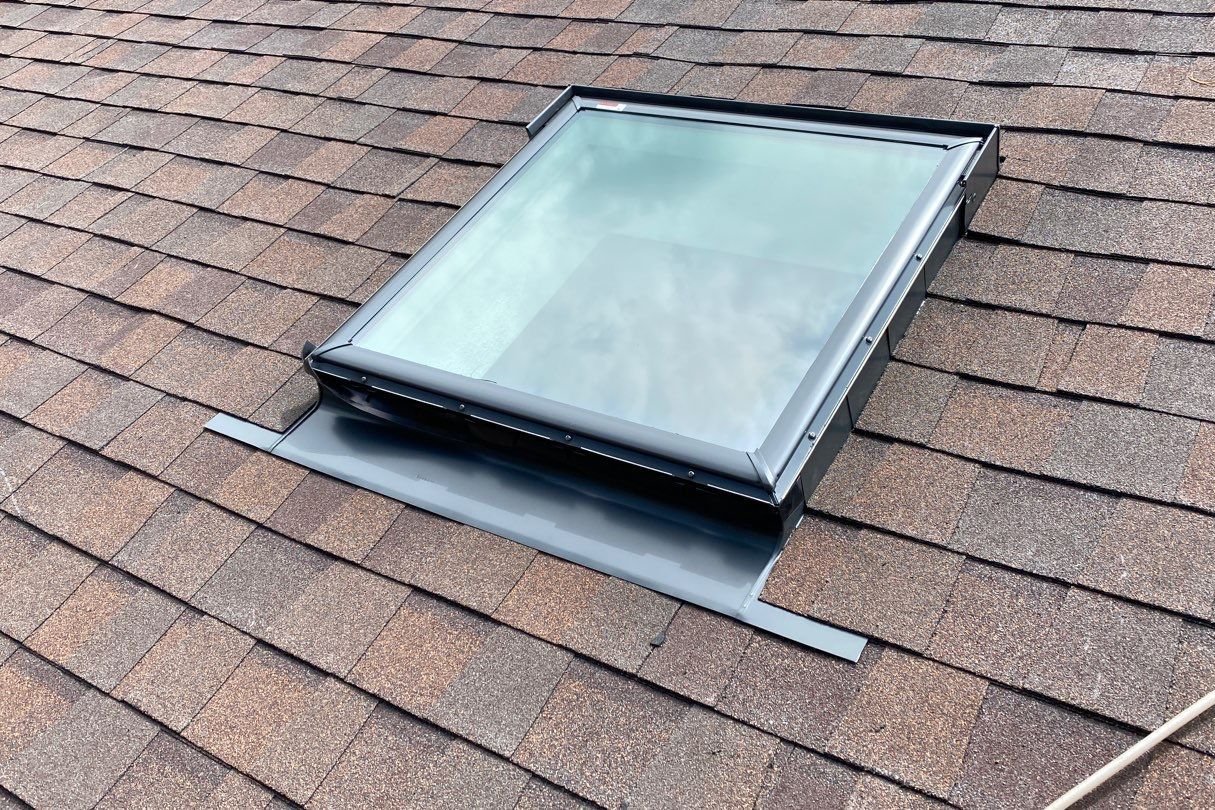
Professional installation involves careful integration of the skylight with the surrounding roofing materials and flashing. - Interior Finishing (Often separate or basic): While the roofer handles the exterior, the interior shaft (the tunnel from the ceiling to the skylight) needs to be framed, insulated, and finished (drywall, paint). Some roofing companies offer this as part of the service, while others leave it to a general contractor or homeowner. It's important to clarify who is responsible for this part of the project.
- Cleanup: A professional roofer will clean up all debris from the roof and surrounding area.
This process highlights the need for expertise in both structural modification and, most importantly, weatherproofing, which are core competencies of a qualified roofer.
Types of Skylights and Considerations
Skylights come in various types, each with its own considerations for installation:
- Fixed Skylights: These do not open and are used purely for natural light. They are generally the simplest to install.
- Venting Skylights: These can be opened manually or electrically (often with a remote control) to provide ventilation. Installation is more complex due to the operating mechanism and potential wiring.
- Tubular Skylights (Sun Tunnels): These use a reflective tube to channel sunlight from a small dome on the roof to a diffuser in the ceiling below. They are suitable for smaller spaces or areas where a traditional skylight is difficult to install due to obstructions. Installation involves penetrating the roof and ceiling but is less disruptive structurally than larger skylights.
- Skylight Materials: Common materials include glass (tempered or laminated for safety) and polycarbonate. Glass is generally more durable and less prone to yellowing, while polycarbonate is impact-resistant.
- Energy Efficiency: Look for skylights with good U-factors and Solar Heat Gain Coefficients (SHGC) to minimize heat loss in winter and heat gain in summer. Double or triple-pane glass with low-E coatings and argon gas filling significantly improves energy performance.
- Placement: Consider the direction the skylight will face (south-facing provides the most direct light, north-facing provides consistent, diffused light), potential for glare, and privacy.
Discussing these options with a qualified roofer can help you choose the best skylight for your needs and ensure it's compatible with your roof type and structure.
Getting Estimates and Planning Your Project
Once you've decided on installing a skylight, the next step is to get estimates from qualified professionals. For a project like skylight installation, which involves cutting into the roof and structural elements, an in-person assessment is typically required to provide an accurate quote. The roofer will need to inspect the interior space, the attic (if accessible), and the exterior roof area to understand the scope of work.
While not designed for specific skylight quotes, understanding the general characteristics of your roof can still be helpful background information when talking to roofers.
If you're planning future roof projects or curious about your roof's basic parameters, you can explore our service to get a quick overview: Get a quick roof overview
However, for the actual skylight installation quote and planning, a professional roofer's site visit is essential. They will evaluate the complexity of the installation based on your roof's pitch, material, age, and the specific skylight you choose.
Scheduling the Installation
Finding a trustworthy and experienced roofer and scheduling the installation can sometimes be a time-consuming process. You need to call multiple contractors, explain your project, arrange site visits for estimates, and compare proposals.
SkyQuote simplifies this process by connecting you directly with pre-vetted local roofing professionals who are equipped to handle projects like skylight installation. Instead of searching and calling multiple companies, you can use our platform to indicate the service you need and your availability.
Ready to add natural light to your home with a professionally installed skylight? Use SkyQuote to connect with qualified local roofers and schedule your consultation or installation appointment: Book your skylight installation appointment
Our system helps streamline the initial contact and scheduling, making it easier for you to get your skylight project underway with a reliable contractor.
Post-Installation Considerations
After your new skylight is installed, it's important to understand any warranties that apply. This includes the skylight manufacturer's warranty (often covering the unit itself against defects) and the roofer's workmanship warranty (covering the installation against leaks or other issues caused by faulty work). Keep records of the installation and warranty information.
Regular roof maintenance is also important, including checking around the skylight for any signs of issues, such as debris accumulation, cracked glass, or signs of leaks on the interior ceiling. Cleaning the skylight periodically will maintain its clarity and appearance.
Choosing the Right Professional for Your Home
Adding a skylight is a valuable home improvement that brings light and life into your living spaces. To protect your investment and ensure the project is completed safely and effectively, choosing the right professional is paramount. Licensed roofers possess the specific expertise in roof structures, weatherproofing, and material integration that is essential for a successful skylight installation.
By focusing on qualified roofers with experience in skylight projects, homeowners can avoid the potential pitfalls of improper installation and enjoy the benefits of their new skylight for many years to come.
Brightening Your Home, Expertly Done
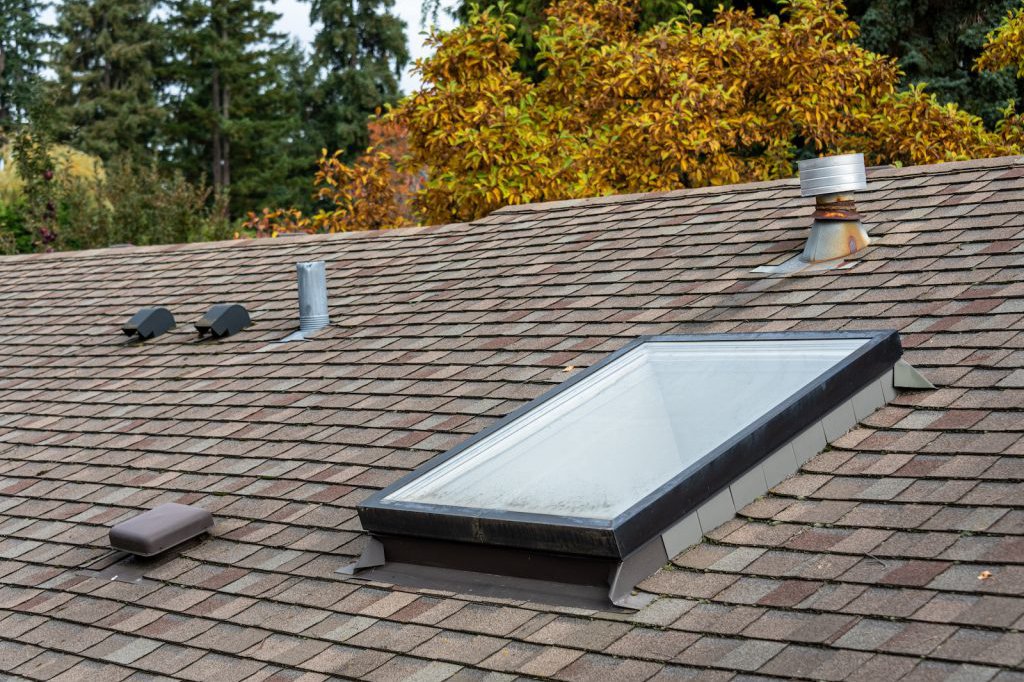
Adding a skylight is an excellent way to enhance your home's natural lighting and create a more comfortable living environment. The key to a successful project lies in professional installation. Entrusting this work to a qualified roofer ensures that the complex task of integrating a window into your roof structure is handled with the necessary expertise and attention to detail, providing you with a beautiful, leak-free addition for years to come.
